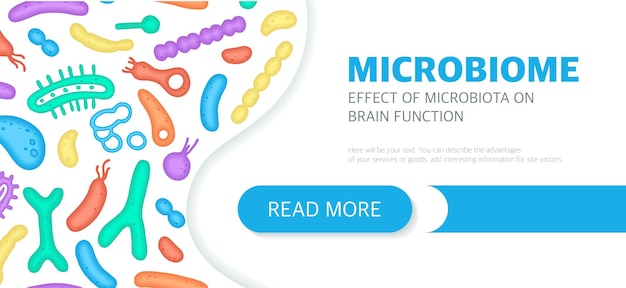A new study led by Alejandro Tapia-González and a team of researchers has shed light on the potential impacts of non-nutritive sweeteners (NNSs) consumed during pregnancy on the colostrum microbiota—a key element in the development of an infant’s gut microbiota. Non-nutritive sweeteners, popular for providing sweetness without the added calories, have been associated with disruptions in gut microbiota and glucose control in both adults and children. However, the influence of NNSs on the initial microbial communities passed from mother to child through breastfeeding remained unclear.
To explore this, the research team analyzed colostrum samples from mothers with varying consumption levels of NNSs using advanced DNA sequencing technologies. Their findings reveal that while the core composition of colostrum microbiota remains largely unaffected, marked shifts do occur in specific microbial genera. Particularly noteworthy is the significant increase in unclassified Archaea spp., which have been previously linked to obesity in Mexican children, corresponding to higher NNS intake.
Published in a recent issue of a prominent scientific journal, this pioneering study provides crucial insights into how maternal diet—specifically the intake of synthetic sweeteners—might influence the early microbial environment provided to newborns, potentially shaping their health outcomes in the future.
The implications of maternal diet on neonatal health have been extensively studied, yet the impact of non-nutritive sweeteners (NNSs) consumed during pregnancy has only recently become a focal point of scientific inquiry. NNSs, such as aspartame, sucralose, and stevia, are widely used as substitutes for sugar because they provide the desired sweetness without the additional calories. Their popularity stems from growing health concerns over sugar consumption, including obesity and diabetes, particularly in Western diets. However, while the role of NNSs in adult health has been somewhat scrutinized, understanding their effects during critical periods of development, such as pregnancy and early infancy, is less developed.
Research into the human microbiome has significantly advanced in the last decade, revealing complex interactions between diet, microbes, and host health. The microbiota of the colostrum, the first form of milk produced by mammals immediately following delivery, plays a crucial role in establishing the gut microbiota of newborns, which in turn affects their immune development and metabolic programming. Hence, alterations in the colostrum’s microbial composition could have long-lasting effects on a child’s health.
Prior to this study by Alejandro Tapia-González et al., much of the research on dietary impacts on colostrum microbiota has focused on nutrients such as fats, proteins, and carbohydrates. The specific effects of synthetic substances, such as NNSs, remained a critical gap in our understanding. Tapia-González’s team, therefore, explored whether these widely used sweeteners could alter the microbial populations transferred from mothers to their infants during this early and influential stage.
The backdrop of this research is grounded in earlier findings that demonstrate a correlation between NNS consumption and altered gut microbiota and impaired glucose control in both adults and children. These disruptions are thought to potentially contribute to various health issues, including metabolic disorders like obesity and diabetes—ironically, the very conditions NNSs aim to mitigate by reducing caloric intake from sugar.
In their innovative study, the research team utilized advanced DNA sequencing technologies to analyze the colostrum of mothers with varying levels of NNS consumption. By doing so, they provided new insights into the complex interplay of diet, maternal health, and neonatal microbiota establishment. This focus on the specific genera of microbes that show significant fluctuations in prevalence according to maternal NNS intake is particularly telling. The increase in unclassified Archaea spp., previously linked to obesity in Mexican children, suggests that NNS consumption could be contributing to changes in the microbiotic landscape that might predispose infants to adverse health outcomes.
Published in a prominent scientific journal, this research not only offers critical insights into the early-life impacts of maternal diet but also sets the stage for further investigations. There is a growing demand for studies that can disentangle the multi-faceted effects of NNSs on both pregnant mothers and their offspring. The findings underscore the need for guidelines and recommendations regarding NNS intake during pregnancy, aligning with a precautionary approach to maternal nutrition that prioritizes long-term health outcomes for the next generation.
To ascertain the specific impacts of non-nutritive sweeteners (NNSs) on colostrum microbiota, Alejandro Tapia-González and his research team embarked on a meticulously designed study. Key to their investigation was the collection and analysis of colostrum samples from a diverse group of mothers who reported varying levels of NNS consumption during pregnancy. This approach enabled a comparative analysis to discern any patterns linked to sweetener intake.
**Participant Recruitment and Data Collection**
The study recruited pregnant women from several prenatal clinics, using a stratified sampling method to ensure a representative mix of dietary habits regarding NNS usage. Participants were categorized into three groups based on their self-reported intake of NNSs: high, moderate, and no NNS consumption. Detailed dietary assessments were conducted through interviews using a validated food frequency questionnaire specially adapted to include NNS-containing products. In addition, demographic data, health history, and pregnancy-related variables such as gestational age and Body Mass Index (BMI) were recorded to control for potential confounders in the analysis.
**Colostrum Collection and Processing**
Colostrum samples were collected within the first 48 hours post-delivery. Mothers were instructed on aseptic techniques to minimize contamination. Each sample was immediately refrigerated and transported to the lab where they were processed under sterile conditions. The colostrum was then centrifuged, and the supernatant was stored at -80°C until further analysis.
**Microbial DNA Extraction and Sequencing**
Microbial DNA was extracted from the colostrum using a commercial kit designed for high-throughput DNA isolation from bodily fluids, ensuring reproducibility and efficiency in DNA yield. Subsequently, the DNA samples underwent 16S rRNA gene sequencing, focusing on V4 hypervariable regions to identify and classify bacteria at the genus level. Advanced bioinformatics tools were used to analyze sequencing data, with particular attention to diversity, richness, and relative abundance of microbial taxa.
**Statistical Analysis**
Statistical methods included descriptive statistics to characterize the cohort and multiple regression analyses to investigate associations between NNS intake and changes in specific microbial genera. Models were adjusted for potential confounders identified during the data collection phase. The team employed alpha diversity indices to examine the microbial richness and evenness, and beta diversity metrics to assess differences in microbial community composition across the different intake groups.
**Sensitivity Analyses**
To ensure robustness of their findings, the team conducted sensitivity analyses, including subgroup analyses by maternal BMI and gestational age at delivery. These analyses helped to determine whether the observed microbial shifts were consistent across various maternal health conditions and stages of pregnancy.
Through this rigorous methodological framework, Tapia-González and his team were able to provide pioneering insights into how maternal consumption of NNSs might alter the microbial landscape of colostrum. This study not only highlights the sophistication and challenges in studying maternal-infant health interactions but also sets a foundation for future research in this critical area of developmental biology and nutrition.
**Key Findings and Results**
Alejandro Tapia-González and his research team’s examination of colostrum microbiota revealed nuanced yet significant shifts tied to maternal consumption of non-nutritive sweeteners (NNSs). The overarching discovery was that while the overall structure and diversity of the colostrum microbiota remained stable across all study groups, discernible differences in specific microbial populations correlated with NNS intake levels.
The primary result indicated an increase in the prevalence of unclassified Archaea spp. in the colostrum of mothers with high NNS consumption. These organisms are part of a domain of life that is less understood than bacteria but known to play roles in various metabolic processes. The relevance of this finding is underscored by previous research linking unclassified Archaea spp. to obesity in children, suggesting a potential pathway by which maternal diet influences infant health outcomes. This could be particularly concerning considering the role of colostrum in establishing a newborn’s gut microbiota, which is crucial for immune system development and metabolic function.
Further, the study highlighted changes in other microbial taxa that varied with NNS intake. Mothers consuming moderate to high levels of NNSs showed a reduced presence of Lactobacillus, a genus widely recognized for its beneficial effects in both digestive and immune health. The decrease in Lactobacillus count might contribute to altered immune responses or digestive efficiency in infants, although further research is needed to better understand these associations.
Several additional insights came from examining the diversity metrics of the microbiota. Despite significant shifts in specific genera, the overall microbial diversity and richness did not differ significantly across the study cohorts, suggesting that NNS consumption does not broadly alter the number of different microbial species in colostrum but rather affects the abundance of certain taxa.
Statistical analysis reinforced these biological findings, showing strong correlations between NNS intake levels and changes in the microbiota’s composition. These associations held true even after adjusting for potential confounders such as maternal BMI, gestational age, and dietary patterns, reinforcing the likelihood that NNS intake was a decisive factor in shaping the microbial landscape of colostrum.
**Implications and Future Directions**
The implications of these findings are profound. They suggest that NNS consumption during pregnancy does not just impact the mother’s health but may also predispose children to health challenges through modifications in the microbial inoculum received via colostrum. This pioneering study paints a complex picture of how maternal diet can have cascading effects on neonatal health through the lens of microbial transmission.
For future research, these results serve as a foundation for longitudinal studies aimed at tracking children from birth into later stages of life to assess the long-term health impacts of microbial changes initiated by maternal NNS intake. Additionally, experimental studies could investigate the mechanistic pathways through which NNS affect microbial populations and infant health outcomes.
Moreover, these findings may prompt a reevaluation of dietary guidelines for pregnant women, factoring in the potential long-term effects of NNSs on the next generation. Moving forward, public health policies could be informed by such research, potentially advocating for reduced consumption of synthetic sweeteners during pregnancy to safeguard early microbial development and thus, improve long-term child health outcomes.
The groundbreaking findings of Alejandro Tapia-González and his research team pave the way for an important and evolving dialogue on maternal nutrition and its intricate connection to neonatal health. The study’s conclusion that maternal intake of non-nutritive sweeteners (NNSs) during pregnancy may shift the colostrum microbiota allows us to consider more deeply how these dietary choices can have ripple effects on the nascent stages of an infant’s development.
Given the central role that gut microbiota plays in metabolic programming and immune function, the potential for long-lasting health implications for children arising from such microbial alterations cannot be understated. The evidence adding a microbiological dimension to the debate on NNS safety profile invites a significant shift in how we perceive and prescribe dietary guidelines during pregnancy.
### Future Directions
**Longitudinal Cohort Studies:** It is paramount that future research includes longitudinal studies that track children from birth into adulthood. Observing how early microbiological changes affect long-term health outcomes like obesity, diabetes, or immune system disorders could provide stronger, causal evaluations of maternal NNS consumption effects.
**Mechanistic Studies:** Experimental research is critical to decipher the biochemical and physiological mechanisms through which NNSs influence the colostrum microbiota and subsequent health outcomes. Such investigations might explore the direct impact of NNSs on microbial growth or their indirect effects through altering maternal metabolism.
**Diverse Population Studies:** Further studies should embrace demographic diversity to understand how genetic backgrounds, environmental factors, and different dietary patterns impact the colostrum microbiota. This could aid in developing more personalized dietary recommendations for pregnant women worldwide.
**Health Policy and Public Awareness:** These findings should inspire policymakers to consider updating dietary guidelines for pregnant women, factoring in potential risks associated with NNS consumption. Strategies to enhance awareness among healthcare providers and expectant mothers about the potential effects of NNSs are also crucial.
### Final Thoughts
While the consumption of non-nutritive sweeteners might appear as a viable strategy for managing caloric intake, particularly during pregnancy, their broader implications on neonatal health demand cautious consideration. Tapia-González and his team’s study has only scratched the surface of understanding the profound influence maternal diet has on infant health viable the microbiota channel.
As we move forward, the health sciences community must continue to explore and elucidate these complex biological interactions with the ultimate goal of ensuring better health outcomes not just in individual patients, but across generations. Engaging in this kind of research not only responds to immediate health concerns but also contributes to the foundational health of our future populations through informed, evidence-based maternal nutrition guidelines. The ongoing challenge will be balancing dietary needs with potential long-term public health implications, ensuring that today’s solutions do not become tomorrow’s problems.









